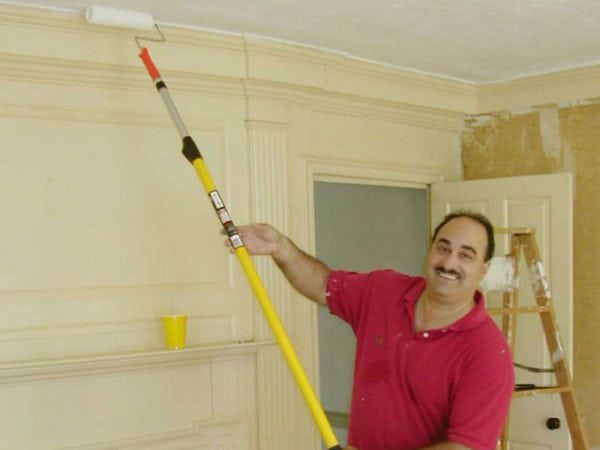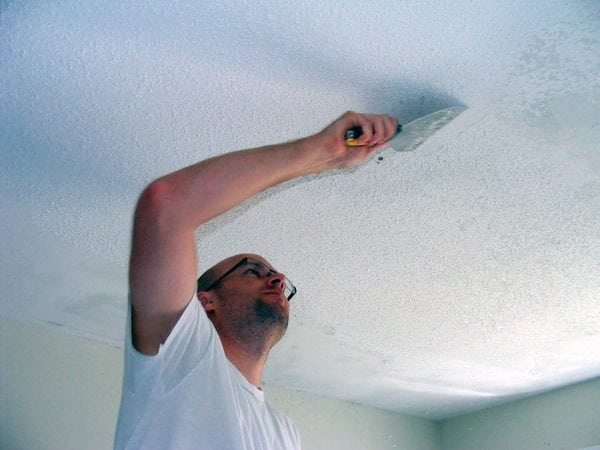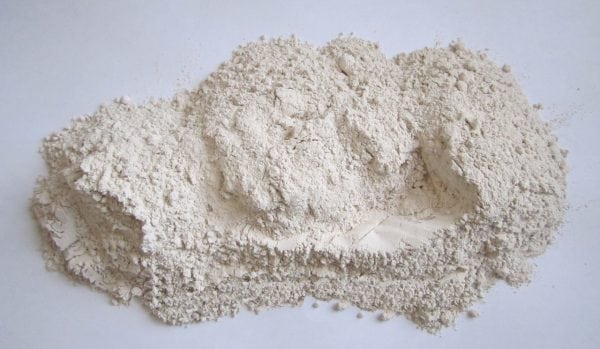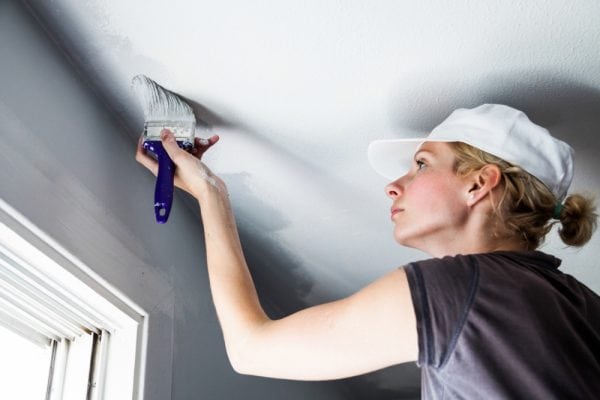The ceiling is one of the most important parts of the interior of any apartment. And today, a huge amount of a wide variety of materials is used to repair the ceiling. However, despite the huge variety of modern technologies and finishes, whitewashing is still relevant and popular.
- Surface preparation for whitewashing
- Alignment
- What to whiten
- Chalk whitewashing
- Solution preparation
- How to whiten
- Lime whitewash
- Solution preparation
- How to whiten

To whiten the ceiling with water-based paint is the easiest way to give it an appropriate appearance. But whitewashing with prepared solutions of lime and chalk is no less high-quality and at the same time affordable and simple way with which you can update the room. After all, a freshly whitewashed ceiling will make any room fresher, more spacious and more comfortable.
to contents ↑Surface preparation for whitewashing
Preparing the ceiling for whitewashing is a rather crucial stage in all work. If it is missed or insufficiently performed efficiently, a new whitewash may simply crumble after a while. It is especially important to properly prepare the surface if the coating has been treated with lime, and now chalk or paint will be used for whitewashing.
Surface preparation can be called the most responsible and time-consuming stage of work. It is carried out in order to prevent dirt stains, grease or rust from appearing through fresh paint or another coating, and the surface itself will have a uniform and monotonous appearance.
The surface preparation process can be divided into three stages:
- removal of the old whitewash layer;
- removing traces of dirt and stains from the ceiling surface;
- surface leveling;
Old whitewash can be removed with a sponge dipped in soapy water. It will remove the old coating of paste and wide spatula. The stage of preparation, fully depends on what material the ceiling was covered. This is due to the fact that the chalk solution is removed quite simply, but in order to get rid of the lime solution will have to make an effort.
To determine what the ceiling was covered with, just hold it with your palm or material. After chalk on the surface there will always be a white trace. The more thoroughly the previous whitewash layer has been cleaned, the better the adhesion of the new coating to its surface will be.
Ceilings, on the surface of which there is soot or soot left, must be treated with a 3% hydrochloric acid solution. But when performing this treatment, you need to take care of your own protection, the protection of furniture and other items.
The drip, which will nevertheless appear on the ceiling, can be painted over with slurry made from synthetic drying oil and lime. It is necessary to process such places until they completely disappear. Stains of fat are removed with a clean cloth dampened with a solution of soda ash.Then the cleaned place is thoroughly washed with water at room temperature.
to contents ↑Alignment
In order to whitewash the ceiling properly and correctly, it must first be leveled. Cracks, cracks and irregularities need to be filled with a plaster solution. For example, lime plaster damage must be filled with a mortar of the same quality. Such a solution is prepared from two parts of fine but clean sand, one part of water and lime slurry. Lime is diluted with water at room temperature, sand and more water are added to it to obtain a homogeneous, dense mass. Slaked lime is mixed with sand and water is added.
In order to level the ceiling, you can use adhesive putty. This solution is easy to prepare and apply, it will hold well on the surface of the ceiling. Such putty consists of one part of chalk, two parts of gypsum and the same amount of wood glue. If it is necessary to obtain a liquid-type solution, the glue is mixed with water in the proportion of 0.5 kg of glue per 1 liter of water.
to contents ↑Putty is applied to the surface using a special spatula. The solution is applied first across the cracks and crevices, and then along. A smooth ceiling is rubbed with a fine-grained sandpaper, and to improve the quality of the surface is covered with a primer.
What to whiten
The most common materials for whitewashing the ceiling are chalk and lime. Both options are hygienic and environmentally friendly. Lime perfectly tightens and closes cracks, and also has excellent bactericidal properties.
If any of the residents have an allergy to lime, the ceiling can be whitewashed with chalk. A distinctive feature of chalk, when using it to decorate the ceiling, you can call it a clean and bright white color. In addition, chalk has excellent hygienic qualities and provides the premises with sanitary and hygienic conditions. Many people consider whitewashing the application of water-based paint on the ceiling, but this process can be called rather painting.
to contents ↑Chalk whitewashing
Before whitewashing the ceiling with chalk, you should definitely pay attention to the material with which it was covered before. This is due to the fact that it is no longer possible to apply lime mortar to the chalky ceiling. The surface after such a treatment can adorn spots and stains.
Solution preparation
Heat 5 liters of water to room temperature and dissolve 30 g of wood glue, 3 kg of chalk and 10-20 g of blue in it. Blue is added to the mixture specifically to enhance the whiteness of future whitewash. Such a quantity of chalk-based solution will be enough to whiten 10-15 square meters. meters of the ceiling. The density of such a solution is checked with a knife, which is immersed in it. If the liquid drains from the blade, then chalk can be added to the solution to bring it to the required consistency.
to contents ↑How to whiten
The whitewashing process itself, as a rule, is carried out in several layers. Each subsequent layer can be applied only after the previous one dries well. In the absence of a spray gun, a roller can be used to properly apply whitewash. The very last layer must be applied towards the window, and the previous ones along the wall near which the window is located. Before starting work, the ceiling must be smeared with a brush around the perimeter. This is done in order not to subsequently touch the already finished walls with the roller.
to contents ↑
Lime whitewash
If you chose calcareous mortar to decorate the surface of the ceiling, remember that in the process of performing work the painted ceiling or even the walls must be protected from direct sunlight. In the process, it is necessary to categorically avoid drafts or try to speed up the drying process through the use of heating devices. Throughout the work cycle, it is necessary to maintain the same temperature regime.
Solution preparation
One liter of water is warmed to room temperature. 2-3 kg of slaked lime, 100 g are added to it. pre-soaked salt or 200 gr. aluminum alum, a small amount of diluted blue and, if necessary, 400-500 gr. dyes.All components are thoroughly mixed, a certain amount of water at room temperature is added to the composition. The total amount of the resulting solution should be 10 liters.
to contents ↑How to whiten
Best of all, lime whitewash rests on a moistened surface and therefore all parts of the ceiling must be constantly moistened during work. To ensure this effect, wide masking cysts, a roller or spray are used.
In order to work with a brush, you must have some experience and therefore an inexperienced worker, in order to get a perfectly even ceiling, it is best to use a roller. All components of the solution are thoroughly mixed to ensure maximum uniformity, which will ensure uniformity of the coating.
If whitening is applied with a brush, then the first layer of the solution is applied in the direction of light, and the rest is already in the opposite direction. The brush to which the solution will be applied is pre-soaked for several hours in plain water.
It can be noted that, if desired and carefully executed, both whitewash application options will make the ceiling white and neat. And which of the options is better will depend on the wishes of the owners of the premises and design features.







